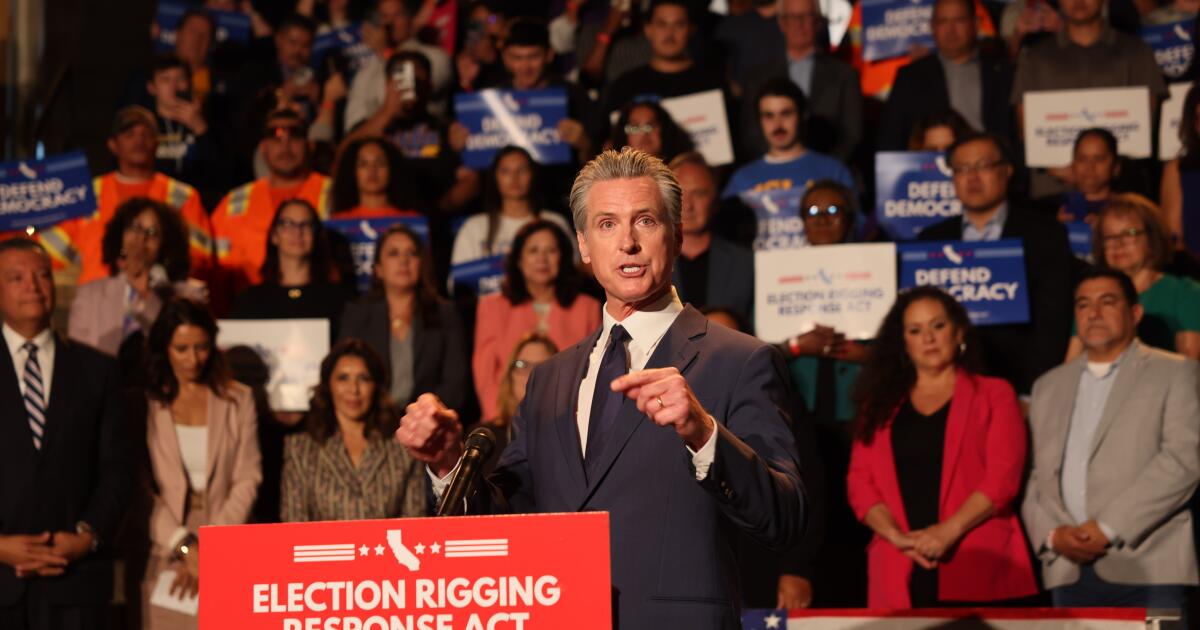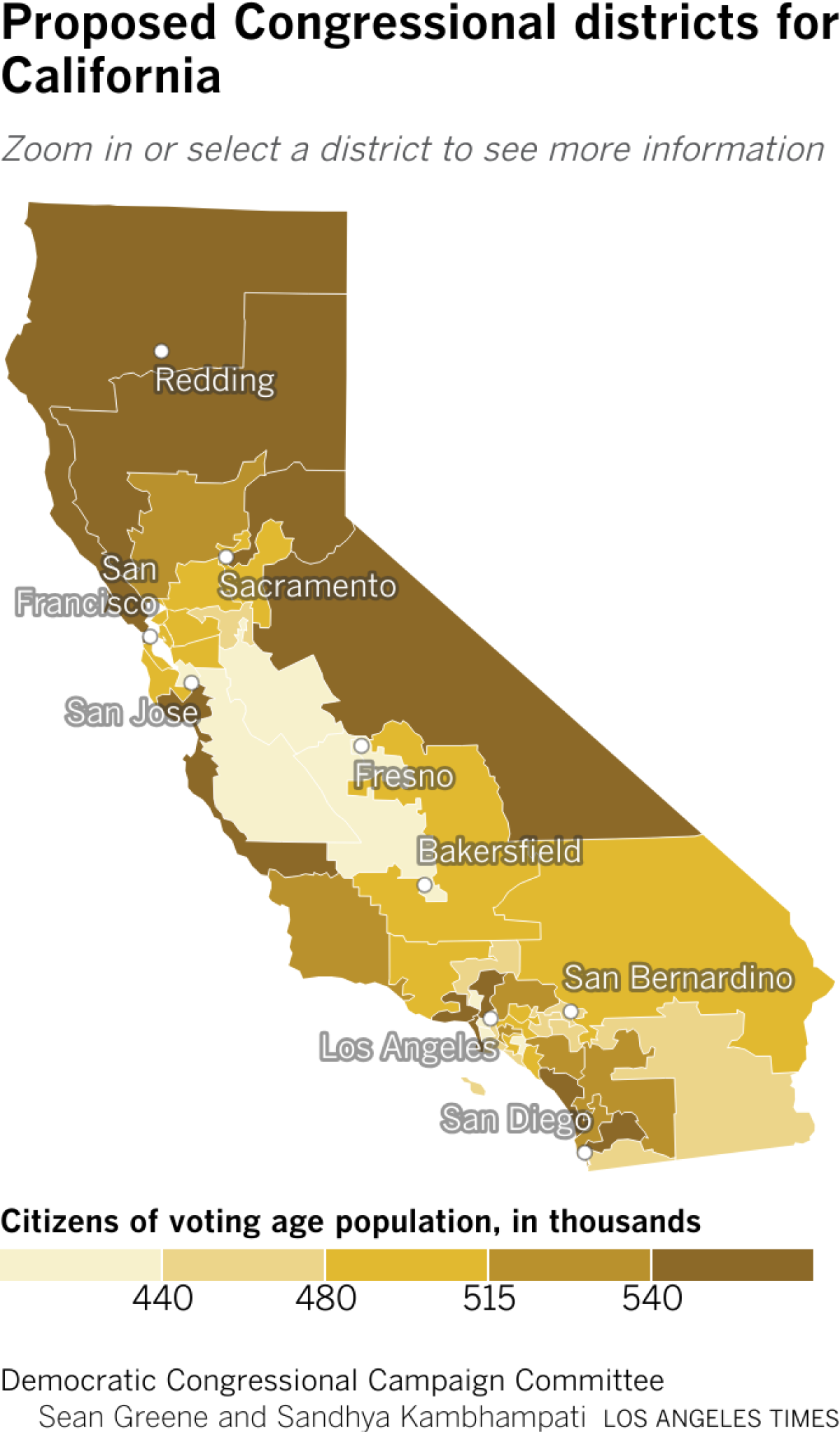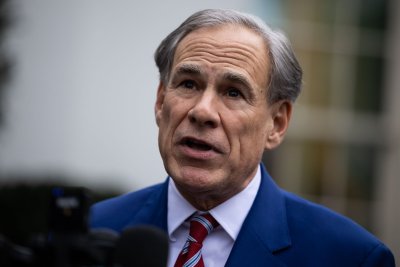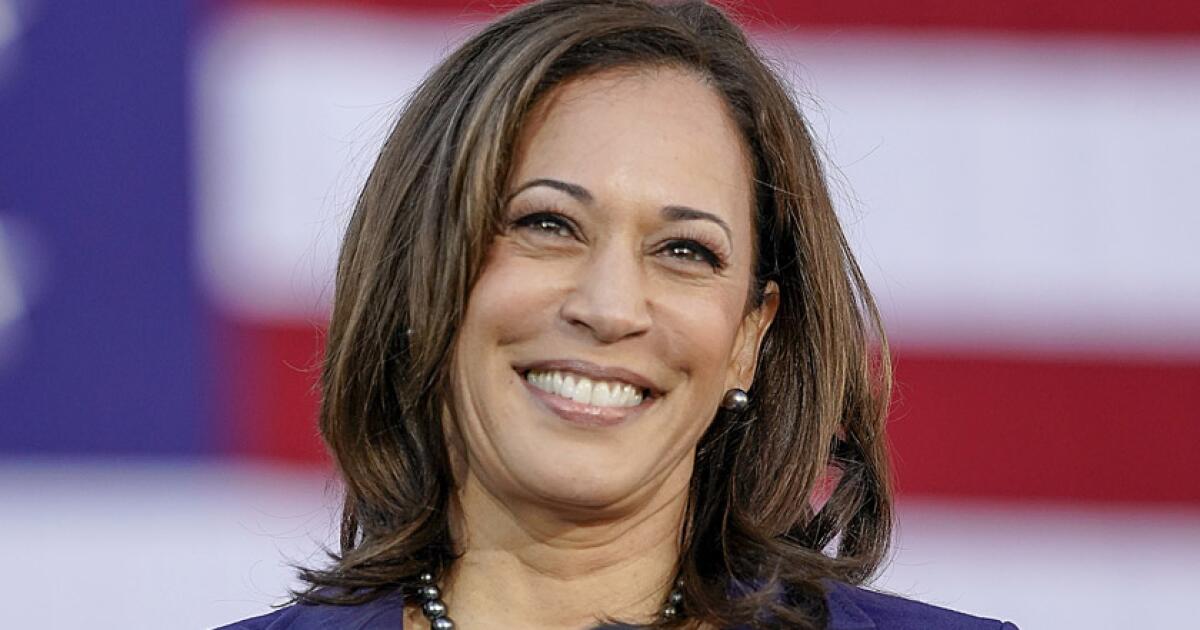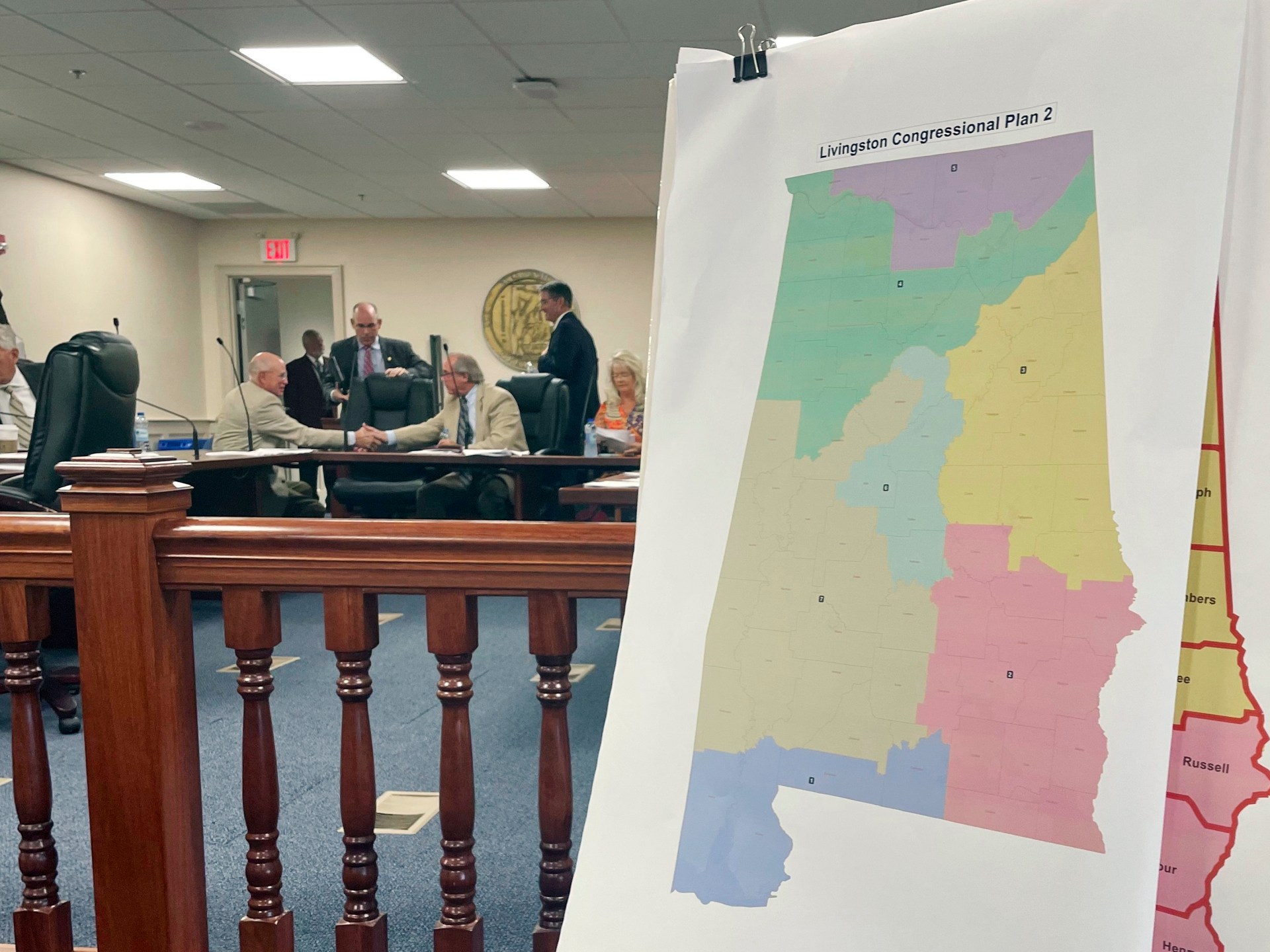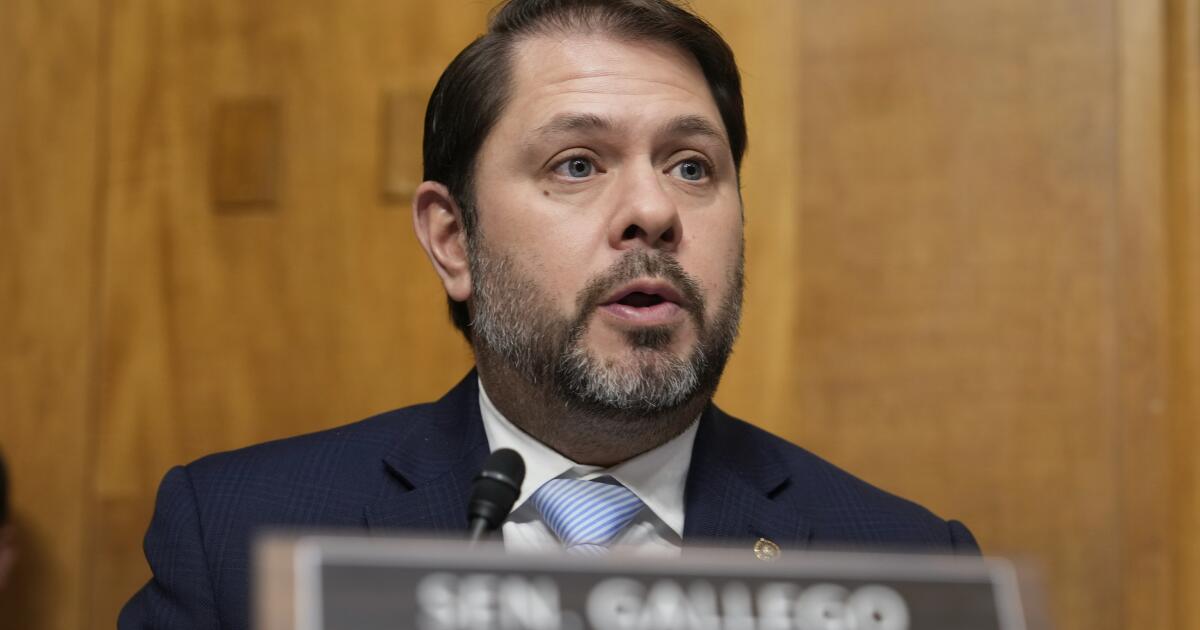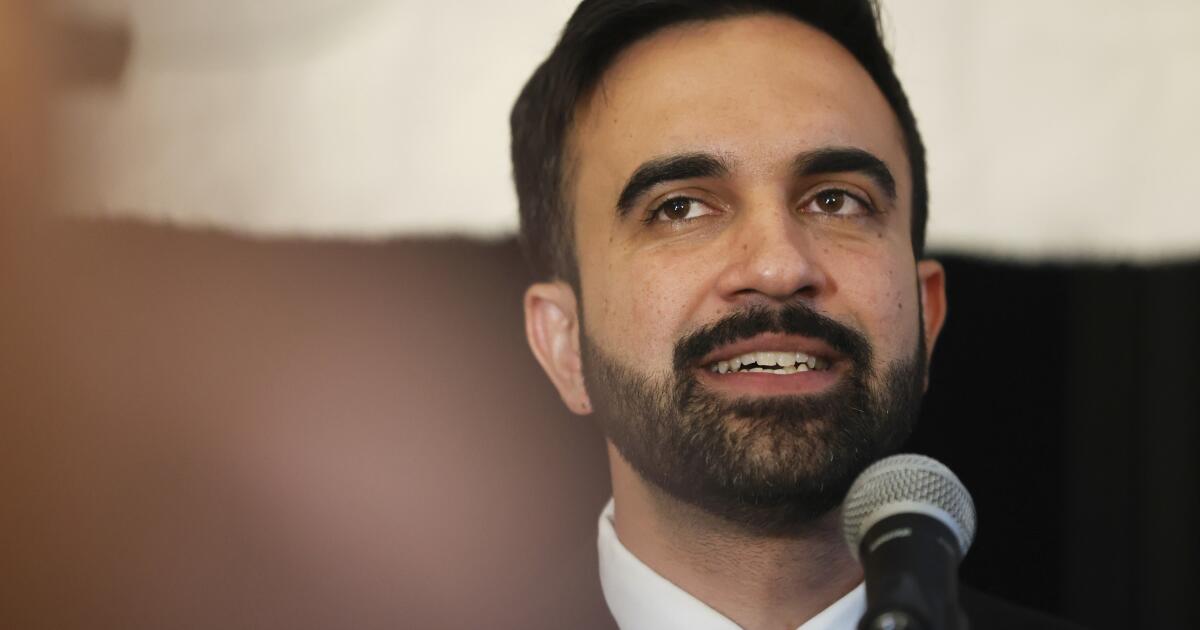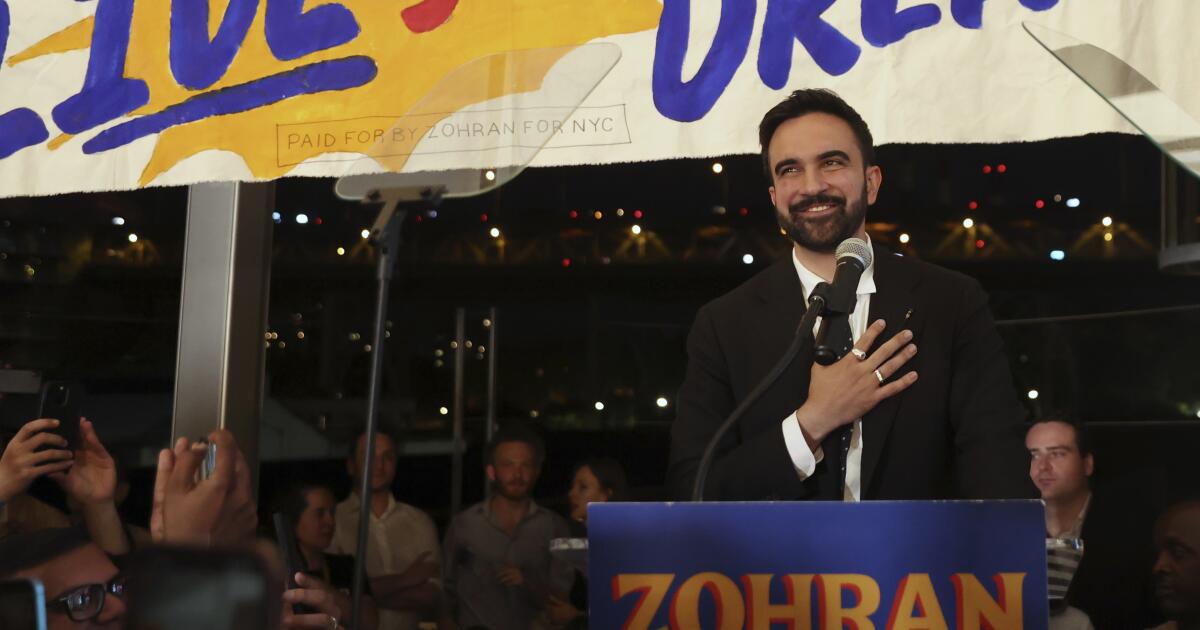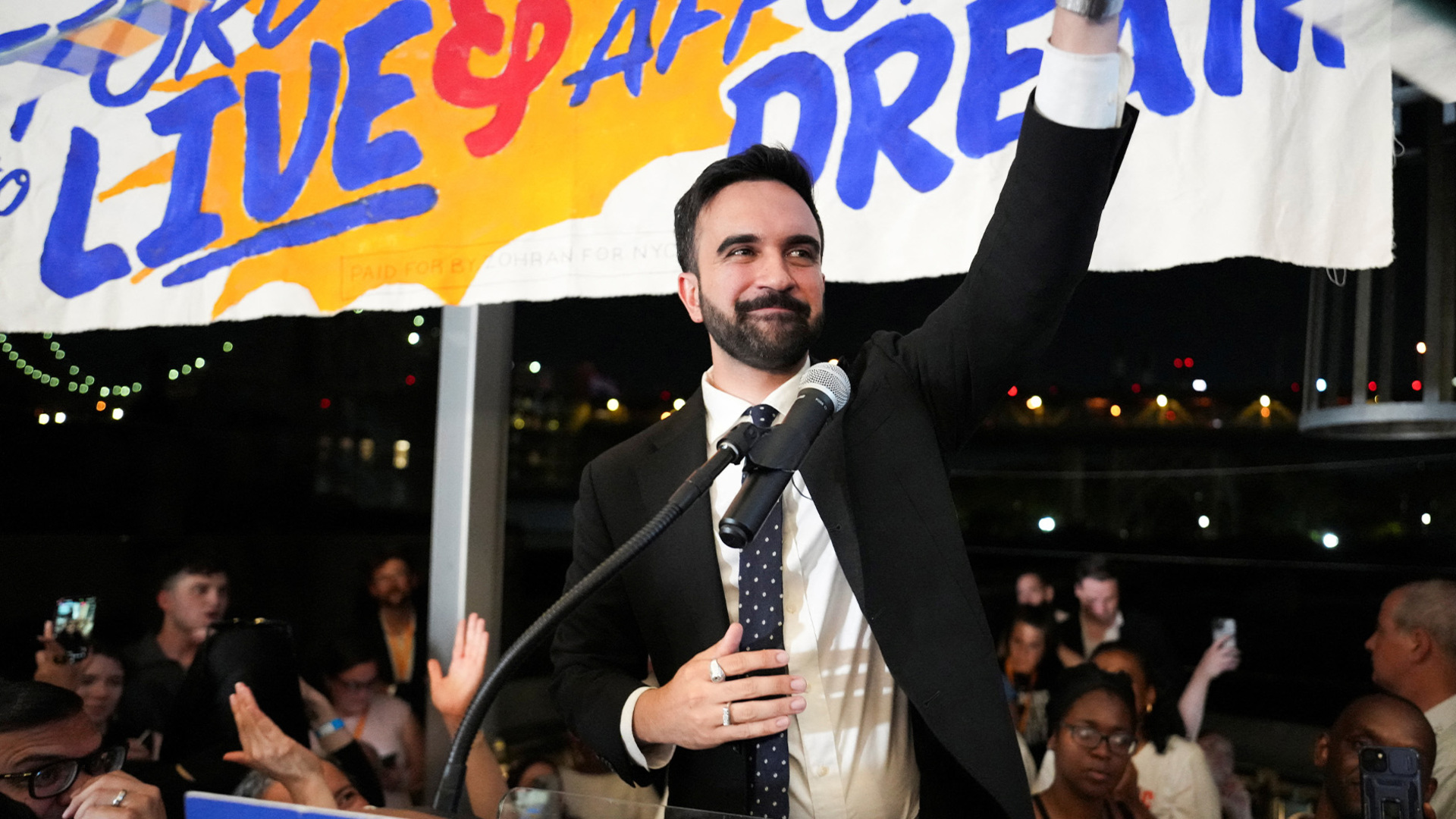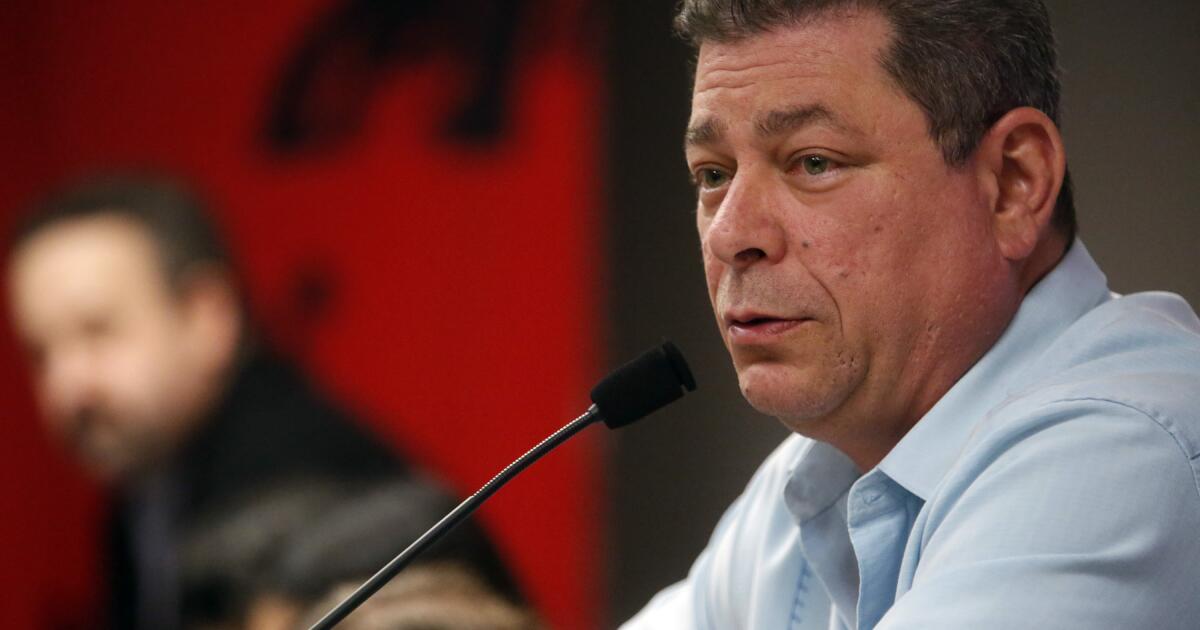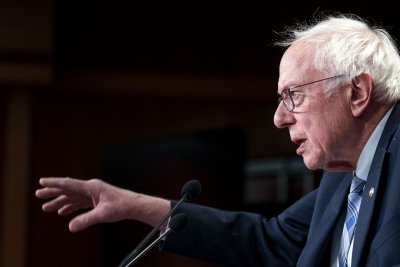A decade and a half after California voters stripped lawmakers of the ability to draw the boundaries of congressional districts, Gov. Gavin Newsom and fellow Democrats are pushing to take that partisan power back.
The redistricting plan taking shape in Sacramento and headed toward voters in November could shift the Golden State’s political landscape for at least six years, if not longer, and sway which party controls the U.S. House of Representatives after the 2026 midterm elections — which will be pivotal to the fate of President Trump’s political agenda.
What Golden State voters choose to do will reverberate nationwide, killing some political careers and launching others, provoking other states to reconfigure their own congressional districts and boosting Gov. Gavin Newsom’s profile as a top Trump nemesis and leader of the nation’s Democratic resistance.
The new maps, drawn by Democratic strategists and lawmakers behind closed doors, were expected to be submitted to legislative leaders by the Democratic Congressional Campaign Committee and widely leaked on Friday. They are expected to appear on a Nov. 4 special election ballot, along with a constitutional amendment that would override the state’s voter-approved, independent redistricting commission.
The changes would ripple across hundreds of miles of California, from the forests near the Oregon state line through the deserts of Death Valley and Palm Springs to the U.S.-Mexico border, expanding Democrats’ grip on California and further isolating Republicans.
The proposed map would concentrate Republican voters in a handful of deep-red districts and eliminate an Inland Empire congressional seat represented by the longest-serving member of California’s GOP delegation. For Democrats, the plans would boost the fortunes of up-and-coming politicians and shore up vulnerable incumbents in Congress, including two new lawmakers who won election by fewer than 1,000 votes last fall.
“This is the final declaration of political war between California and the Trump administration,” said Thad Kousser, a political science professor at UC San Diego.
How will the ballot measure work?
For the state to reverse the independent redistricting process that the electorate approved in 2010, a majority of California voters would have to approve the measure, which backers are calling the “Election Rigging Response Act.”
The state Legislature, where Democrats hold a supermajority in both the Assembly and Senate, will consider the ballot language next week when lawmakers return from summer recess. Both chambers would need to pass the ballot language by a two-thirds majority and get the bill to Newsom’s desk by Aug. 22, leaving just enough time for voter guides to be mailed and ballots to be printed.
The ballot language has not been released. But the decision about approving the new map would ultimately be up to the state’s electorate, which backed independent redistricting in 2010 by more than 61%. Registered Democrats outnumber Republican voters by almost a two-to-one margin in California, providing a decided advantage for supporters of the measure.
Newsom has said that the measure would include a “trigger,” meaning the state’s maps would only take effect if a Republican state — including Texas, Florida and Indiana — approve new mid-decade maps.
“There’s still an exit ramp,” Newsom said. “We’re hopeful they don’t move forward.”
Explaining the esoteric concept of redistricting and getting voters to participate in an off-year election will require that Newsom and his allies, including organized labor, launch what is expected to be an expensive campaign very quickly.
“It’s summer in California,” Kousser said. “People are not focused on this.”
California has no limit on campaign contributions for ballot measures, and a measure that pits Democrats against Trump, and Republicans against Newsom, could become a high-stakes, high-cost national brawl.
“It’s tens of millions of dollars, and it’s going to be determined on the basis of what an opposition looks like as well,” Newsom said Thursday. The fundraising effort, he said, is “not insignificant… considering the 90-day sprint.”
The ballot measure’s campaign website mentions three major funding sources thus far: Newsom’s gubernatorial campaign, the main political action committee for House Democrats in Washington, and Manhattan Beach businessman Bill Bloomfield, a longtime donor to California Democrats.
Those who oppose the mid-decade redistricting are also expected to be well-funded, and will argue that this effort betrays the will of the voters who approved independent congressional redistricting in 2010.
What’s at stake?
Control of the U.S. House of Representatives hangs in the balance.
The party that holds the White House tends to lose House seats during the midterm election. Republicans hold a razor-thin majority in the House, and Democrats taking control of chamber in 2026 would stymie Trump’s controversial, right-wing agenda in his final two years in office.
Redistricting typically only happens once a decade, after the U.S. Census. But Trump has been prodding Republican states, starting with Texas, to redraw their lines in the middle of the decade to boost the GOP’s chances in the midterms.
At Trump’s encouragement, Texas Gov. Greg Abbott called a special legislative session to redraw the Texas congressional map to favor five more Republicans. In response, Newsom and other California Democrats have called for their own maps that would favor five more Democrats.
Texas Democratic lawmakers fled the state to deny the legislature a quorum and stop the vote. They faced daily fines, death threats and calls to be removed from office. They agreed to return to Austin after the special session ended on Friday, with one condition being that California Democrats moved forward with their redistricting plan.
The situation has the potential to spiral into an all-out redistricting arms race, with Trump leaning on Indiana, Florida, Ohio and Missouri to redraw their maps, while Newsom is asking the same of blue states including New York and Illinois.
California Republicans in the crosshairs
The California gerrymandering plan targets five of California’s nine Republican members of Congress: Reps. Kevin Kiley and Doug LaMalfa in Northern California, Rep. David Valadao in the Central Valley, and Reps. Ken Calvert and Darrell Issa in Southern California.
The map consolidates Republican voters into a smaller number of ruby-red districts known as “vote sinks.” Some conservative and rural areas would be shifted into districts where Republican voters would be diluted by high voter registration advantage for Democrats.
The biggest change would be for Calvert, who would see his Inland Empire district eliminated.
Calvert has been in Congress since 1992 and represents a sprawling Riverside County district that includes Lake Elsinore, Menifee, Palm Springs and his home base of Corona. Calvert, who oversees defense spending on the powerful House Appropriations Committee, comfortably won reelection last year despite a well-funded national campaign by Democrats.
Under the proposed map, the Inland Empire district would be carved up and redistributed, parceled out to a district represented by Rep. Young Kim (R-Anaheim Hills). Liberal Palm Springs would be shifted into the district represented by Rep. Darrell Issa (R-Bonsall), which would help tilt the district from Republican to a narrowly divided swing seat.
Members of Congress are not required to live in their districts, but there would not be an obvious seat for Calvert to run for, unless he ran against Kim or Issa.
Leaked screenshots of the map began to circulate Friday afternoon, prompting fierce and immediate pushback from California Republicans.
The lines are “third-world dictator stuff,” Orange County GOP chair Will O’Neill said on X, and the “slicing and dicing of Orange County cities is obscene.”
In Northern California, the boundaries of Kiley’s district would shrink and dogleg into the Sacramento suburbs to add registered Democrats. Kiley said in a post on the social media site X that he expected his district to stay the same because voters would “defeat Newsom’s sham initiative and vindicate the will of California voters.”
LaMalfa’s district would shift south, away from the rural and conservative areas along the Oregon border, and pick up more liberal areas in parts of Sonoma County,
In Central California, boundaries would shift to shore up Reps. Josh Harder (D-Tracy) and Adam Gray (D-Merced). Gray won election last year by 187 votes, the narrowest margin in the country.
Valadao, a perennial target for Democrats, would see the northern boundary of his district stretch into the bluer suburbs of Fresno. Democrats have tried for years to unseat Valadao, who represents a district that has a strong Democratic voter registration advantage on paper, but where turnout among blue voters is lackluster.
Feeding frenzy for open seats
The maps include a new congressional seat in Los Angeles County that would stretch through the southeast cities of Downey, Santa Fe Springs, Whittier and Lakewood. An open seat in Congress is a rare opportunity for politicians, especially in deep-blue Los Angeles County, where incumbent lawmakers can keep their jobs for decades.
Portions of that district were once represented by retired U.S. Rep. Lucille Roybal-Allard, the first Mexican American woman elected to Congress. That seat was eliminated in the 2021 redistricting cycle, when California lost a congressional seat for the first time in its history.
Los Angeles County Supervisor Hilda Solis has told members of the California Congressional delegation that she is thinking about running for the new seat.
Another possible contender, former Assembly speaker Anthony Rendon of Lakewood, launched a campaign for state superintendent of schools in late July and may be out of the mix.
Other lawmakers who represent the area or areas nearby include State Sen. Blanca Rubio (D-Baldwin Park), state Sen. Bob Archuleta (D-Pico Rivera) and state Assemblywoman Lisa Calderon (D-Whittier).
In Northern California, the southern tip of LaMalfa’s district would stretch south into the Sonoma County cities of Santa Rosa and Healdsberg, home to Senate Pro Tem Mike McGuire. McGuire will be termed out of the state Senate next year, and the new seat might present a prime opportunity for him to go to Washington.



